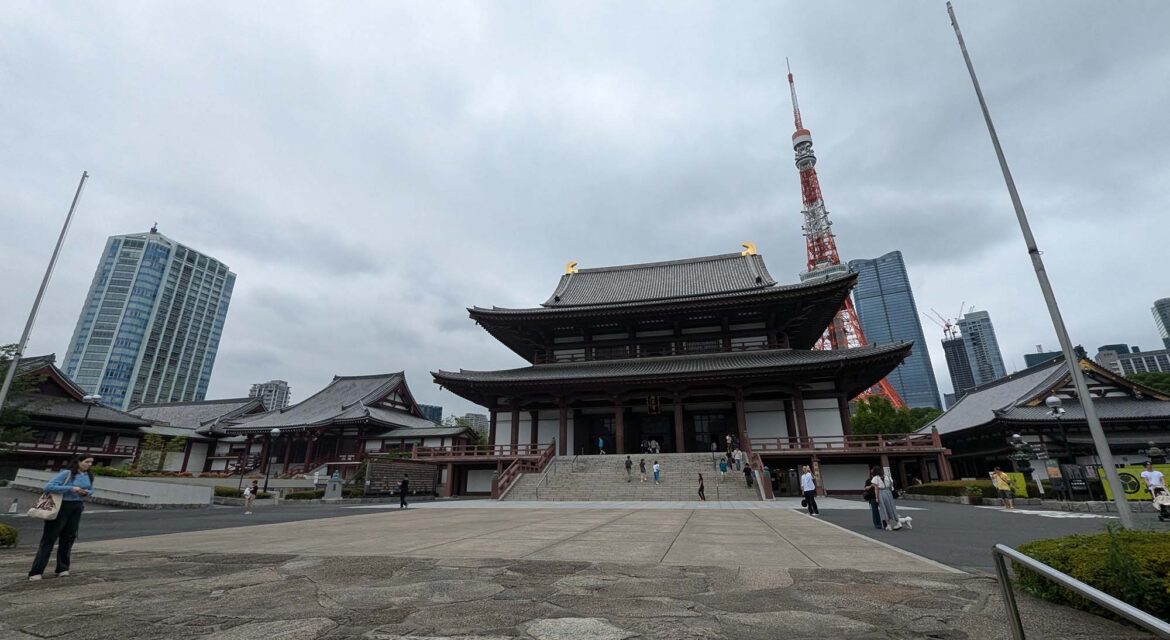 The main temple of the Jodo-Buddhist sect, Zojo-ji is defined by various buildings and landmarks that have made it a cultural icon in Tokyo, Japan. This historic temple complex enables audiences to experience the legacy of Japan in a way that connects the past to the present, allowing residents and visitors to engage with the culture and identity of the entire region.
The main temple of the Jodo-Buddhist sect, Zojo-ji is defined by various buildings and landmarks that have made it a cultural icon in Tokyo, Japan. This historic temple complex enables audiences to experience the legacy of Japan in a way that connects the past to the present, allowing residents and visitors to engage with the culture and identity of the entire region.

Hundreds of Years of History
 Founded in 1393 by the Jodo Shu denomination of Buddhism as the central monastery in the Kanto region, the temple was relocated to the current location in 1598. As many as 3,000 priests and novices regularly studied at the location as students. At its height, the temple grounds had more than 120 buildings, but a decline of Buddhism in the 1800s as well as the firebombing of the city in World War II destroyed much of the complex.
Founded in 1393 by the Jodo Shu denomination of Buddhism as the central monastery in the Kanto region, the temple was relocated to the current location in 1598. As many as 3,000 priests and novices regularly studied at the location as students. At its height, the temple grounds had more than 120 buildings, but a decline of Buddhism in the 1800s as well as the firebombing of the city in World War II destroyed much of the complex.
The site is defined by the Main Hall (Hondo), which was rebuilt in 1974. The Sangedatsumon, or main gate, was constructed in 1622 and is the only structure to survive the bombings of World War II. Other notable buildings include the Ankokuden, the Kosyoden and the Ji-unakaku. Additionally, six of the 15 Tokugawa shoguns are buried at Zojo-ji.
Notable landmarks at Zojo-ji include statues and memorials that are connected to Buddhist icons. A garden contains rows of stone statues of adolescents that represent unborn children. Many are decorated with small clothing and toys and have a small gift for the guardian of unborn children, to ensure that they are brought to the afterlife. The site also contains numerous objects that have the distinction of being Important Cultural Properties of Japan.
With the Tokyo Tower visible in the background, the cultural legacy of the past and present are readily apparent to visitors, who can enter the complex without any admission fee. This accessibility has enabled engagement that cultivates connection across eras.

A Hub of Religious and Cultural Activities
 Endearing itself to the general public as both a great religious landmark and a hub of cultural activities, Zojo-ji has become a top destination for visitors. Cultivating these connections has ensured it will remain a popular destination that residents and visitors can engage with in distinct but powerful ways.
Endearing itself to the general public as both a great religious landmark and a hub of cultural activities, Zojo-ji has become a top destination for visitors. Cultivating these connections has ensured it will remain a popular destination that residents and visitors can engage with in distinct but powerful ways.

